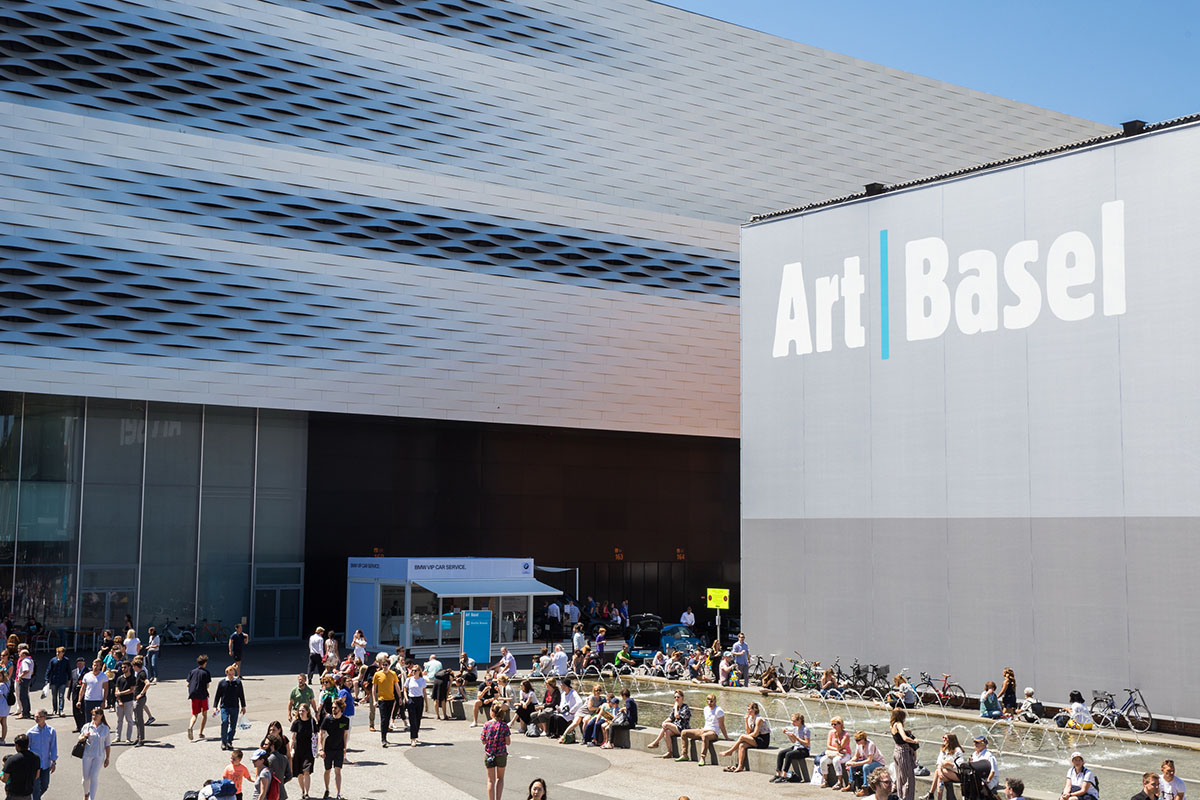
A few weeks ago, Art Basel and UBS published the third edition of their now regular, annual art market report which ‘presents the results of a comprehensive and macro-level analysis of the global art market in 2018.’
Despite our uncertain times the report was full of positive news. There was year-on-year growth in the overall, global art market (+6% reaching an estimated $64 billion), the auction market (+3% reaching $29.1 billion), in sales at art fairs (+6% reaching an estimated $16.5 million) and sales in the dealer sector (+7% reaching an estimated $35.9 billion).
Good news, but not for everyone. In the gallery and dealer sector, the buck stopped somewhere around the threshold between the top and the middle of the market. The report revealed:
“28% of respondents to the annual dealer survey reported positive year-on-year growth, 15% reported that sales were stable and 57% indicated a decline in sales. In 2018, on average, dealers with turnover below $500,000 saw a drop in sales (of 10%), while those with sales above it all increased. Dealers with sales below $250,000 reported the most significant drop in average turnover, with a decline of 18%. The most improved segment was dealers with turnover between $10 million and $50 million… they increased by 17%”
The report underlines the increasingly evident effects of the art market’s intensifying dominance of the art world. As with many other markets, globalisation in the art world is favouring those at the top of the food chain. Combined with the rapidly increasing cost of rent, living and doing business in general, the effects are fatal for the careers and survival of artists and galleries in – economically speaking – the lower reaches of the art ecosystem. The world’s major art centres have all seen a recent spate of closures of emerging and mid-market galleries (with very, few if any, comparable spaces opening in their place) and the disappearance of affordable studio spaces. Thus the art system is taking on the shape of a mushroom with a few mega-galleries and auction houses owning and expanding the top of market, looking down on the shrinking spaces beneath them.
So what? As one director of a major gallery recently told me with admirable frankness – in the neoliberal moral economy, this is simply how the cookie crumbles. Failing artists and galleries are de facto not producing art that enough people want.
There are several problems with this position. No markets are perfect or free, least of all, the art market – being strange, opaque and sui generis. The assumption that the market efficiently finds and rewards the best art is dubious. More dubious still is the deeper assumption that the organising principle of the market is well suited to be primary arbiter of quality and success in area of cultural production. Not all goods are the same, not all objects should be commodities. One of the particular qualities of the art object is its polyvalence – it means and signifies multiple things. It can be an aesthetic, political and economic thing all at the same time, to a degree unmatched by other kinds of objects in the world.

The wonderful Dutch Medieval historian Johan Huizinga was fascinated by how even the most fundamental ways in which we see and understand the world can change over time. He argued that the primary difference between the medieval and the modern world was that in the latter, the economy became foregrounded – dominant in all senses. The medieval world, obviously, had an economy, but it was less visible and less significant and meaningful. He believed that this change of societal focus fundamentally altered our entire worldview and that we cannot now reach back across time and truly understand what medieval people felt and thought about the world. The ends-driven nature of modernity extinguished much of the nuanced sensibility of the culture it superseded. Some things cannot be unlearnt.
When the economy becomes foregrounded in areas of cultural production, the existential danger is that the non-commercial values and meanings of culture are crushed, flattened and forgotten. Once lost those ways of thinking and feeling will be irrecoverable and eventually will become as distant to us as mediaeval understandings of God or beauty.
The plight of artists and galleries who operate – financially speaking – at, or near, subsistence levels, is a microcosm of the wider dissonance in our world caused by unfettered market forces. One need not dispute the extraordinary productive and wealth generating capacity of capitalism to recognise that vital areas of our world and society need protecting from it.
For the art world that means trying to preserve the grassroots of the art ecosystem as a space where artists and galleries can at least survive whilst imagining and creating art that is not simply efficiently engineered to succeed in the market, but that instead, can be other things. What those other things are or could be, or what their value or point might be, we do not know and that is the whole point: the potential of the unknown, the promise of immanence
March, 2019.
Links
The Art Basel and UBS Global Art Market Report 2019: https://www.ubs.com/global/en/about_ubs/art/2019/art-basel.html
Jerry Saltz, Break the Art Fair, New York Magazine, 1 May 2018: https://www.vulture.com/2018/05/jerry-saltz-break-the-art-fair.html
Should we be worried about the future of small galleries? Apollo Magazine, 27 November 2017: https://www.apollo-magazine.com/should-we-be-worried-about-the-future-of-small-galleries/
Anny Shaw, Recent London Gallery Closures Show Struggle at Art Market’s Middle, Artsy, 7 April 2017: http://www.artnews.com/2017/06/27/a-recent-history-of-small-and-mid-size-gallery-closures/
Sarah Douglas, A Recent History of Small and Mid-Size Galleries Closing, Art News, 27 June, 2017: http://www.artnews.com/2017/06/27/a-recent-history-of-small-and-mid-size-gallery-closures/
Johan Huizinga: https://en.wikipedia.org/wiki/Johan_Huizinga



